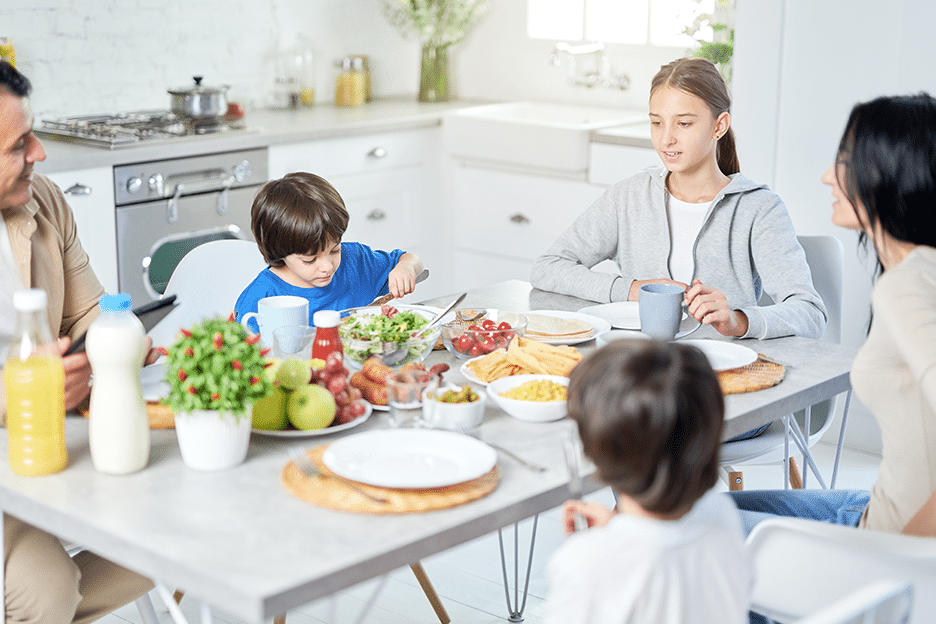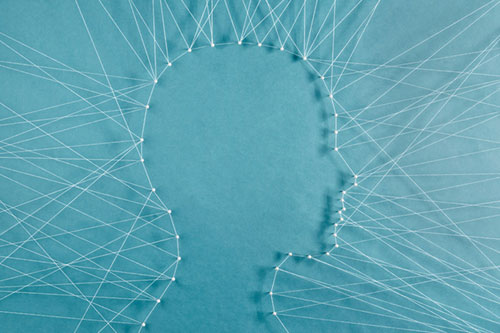Eating disorders: an empowering new perspective

Martin Dunne is a human givens practitioner living in County Kildare, Ireland, and with a practice in nearby Carlow. He has an MA in human givens psychotherapy from Nottingham Trent University, is a human givens supervisor and has a special interest in eating disorders.
Martin Dunne explains how the organising idea of caetextia aids understanding and treatment of anorexia and atypical forms of it.
Bridget came to see me extremely reluctantly: her GP had threatened to get her referred to a hospital specialist if she didn’t try therapy. She was 22, weighed a little over six stone and was evasive, mostly silent, sometimes hostile. Rapport building was almost impossible. She defended her eating habits – or non-eating habit – with the ferocity of a mother defending an endangered child.
Carmel, 34, came to see me of her own volition and, on arrival, blurted out a string of problems: “I have bulimia, and my part-time job is really stressful and I can’t sleep and my mother is not well and, another thing, I have to leave the apartment I am in because the landlord wants to sell it, I’m forever on the go, I never get time to breathe these days, what time do you make it now? I have to catch the 2.15 train – do you think I will make it? I didn’t get a return, so I will have to queue for a ticket, how long are we going to be today?” It was hard to keep her focused, as she skidded from one difficulty to another.
This was all some years ago and, like many therapists I have spoken to, I found clients with these sorts of eating disorders complex and extremely difficult to treat. Progress would be painfully slow and relapse or dropout a regular occurrence. Having thought a lot about this since, I suggest that the organising idea of caetextia can explain much about such eating disorders, and point the way towards more successful, practical treatment, especially if, in the case of anorexia, it can be offered before the onset of full-blown symptoms.
Although self-inflicted starvation has been described down the centuries, adopted amongst others by several saints, ‘hunger artists’ who starved to earn money and political prisoners agitating for change, the first diagnostic criteria for anorexia nervosa were not proposed till 1970,¹ and the condition was included for the first time in the third edition of the Diagnostic and Statistical Manual of Mental Disorders (DSMIII). In the latest edition, DSM-5, criteria are:
- restriction of energy intake relative to requirements, leading to significantly low body weight in the context of age, sex, developmental trajectory and physical health;
- intense fear of gaining weight or of becoming fat, or persistent behaviour that interferes with weight gain (even though at significantly low weight);
- disturbance in the way in which one’s body weight or shape is experienced, undue influence of body weight or shape on self-evaluation, or persistent lack of recognition of the seriousness of the current low body weight.
Primary anorexia reflects a mix of environmental (social) pressures, family dynamics, body dysmorphia, and a possible genetic predisposition. It largely affects females, has an adolescent onset and is associated with above average intelligence. Long-term studies indicate a mortality rate 10 times higher than for the general population and three times higher than for those with other psychiatric illnesses.²
Bulimia nervosa was first described in 1979,³ its core feature being a preoccupation with weight, in association with periods of uncontrolled binge eating and then vomiting, purging, fasting or taking excessive exercise. People with primary anorexia may sometimes resort to these methods of weight loss, too, and many with bulimia have had past episodes of anorexia. Bulimics tend to be of normal or just above normal weight. DSM- 5 also identifies a sub-category of eating disorders termed atypical anorexia nervosa. Someone suffering it will have the same extreme fear of gaining weight and restrict food intake or weight gain in a variety of ways, including the above, but will not be of dangerously low weight. Whereas primary anorexia usually takes hold in teenage years, those with bulimia and binge eating atypical anorexia tend to be at least in their 20s when the symptoms appear.
The pattern of anorexia
All kinds of theorists from different disciplines have endeavoured to get to the heart of, and explain, anorexia nervosa, the most dramatic and lethal of the eating disorders, but, pulling the many explanations together, it is easy to fit the salient factors with the innate drive to meet emotional needs – and thus better understand the meaning attributed to it by those in its grip. I here distil what has been observed or described in the literature, taking a human givens perspective.

Self-esteem is bolstered by all this initial success and is accompanied by feelings of being special: “The less I weigh and the smaller I get, the more control and mental strength I gain” is the core meaning abstracted from this pattern. The sufferer becomes addicted to the effect that anorexia has on their feelings – and in particular to the sense of control (at least, over their body) that it gives them. Avoiding food becomes a compulsion that has the same root as addictive behaviours – variously fear, dissatisfaction, insecurity, low self-confidence and an inability to deal with emotional pain. Increasingly, self-esteem becomes enmeshed in, and dependent on, weight loss. Anorexia nervosa continues to provide a sense of security, provided by rigid scheduling and strict rules about eating and exercising, without which individuals would feel confused, disorganised and frighteningly at risk of weight gain. Many find that starvation numbs uncomfortable feelings. The pattern of being unable to identify and express feelings, or to distinguish between emotions and bodily sensations, is the most common feature in eating disorders.
But increased effort is needed to continue to lose weight as the body loses its fat reserves, so social activities are dropped and the resultant isolation, while leaving the important need for community unmet, will have the welcome consequence of protecting the individual from the uncertainty of interpersonal relationships.
Though many experience an internal voice that is commanding and punishing, they may wish to keep hearing this voice, since it helps them achieve their goal of further food restriction or exercising. From my own observations as a therapist, the most negative aspects of the condition from clients’ own point of view are the hurt they cause their families and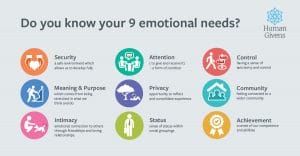
The link with autistic spectrum disorder
In the mid-2000s, researchers began to explore the idea that anorexia might be one way that autism manifests itself in females, making them less likely to be identified as autistic. (It has been known for some time, within human givens practice, that many women who come for therapy have characteristics that fit with autistic spectrum disorder, yet have never been diagnosed.) There are striking similarities in the cognitive profiles of people with autism and anorexia. They both tend to be rigid about details, obsessive about routines and distressed by change. Because many on the autistic spectrum find certain tastes and food textures aversive, they often end up with severely restricted diets.⁴ They also have limited interests and, in anorexia, interests gradually become restricted to food and food control. Both are preoccupied with the self – with their own weight and their right to do as they want with their bodies, in the case of anorexia, while the word ‘autism’ literally means an exclusive focus on the self. There can be failure to empathise – people with anorexia may acknowledge the stress their behaviour causes their families but ignore it, while the social difficulties of those with autism are well documented. Further, deficits in ‘emotional intelligence’, difficulty in completing the “Reading the Mind in the Eyes” Test⁵ and inability to identify and describe one’s own emotions are seen in both anorexia and those on the autistic spectrum.
In 2013, Simon Baron-Cohen, professor of developmental psychopathology at the University of Cambridge and a leading authority on autism, published with colleagues the findings of research into a connection between anorexia and autism. They compared 66 young females aged 12–18, diagnosed with anorexia but not autism, with 1,600 teenage girls of the same age, who didn’t have either. After measuring autistic traits, using the Autism Spectrum Quotient that Baron- Cohen and his team developed, they found that five times more girls with anorexia than ‘typical’ girls scored within the range for being on the autism spectrum. In addition, over half of the girls with anorexia showed personality and cognitive traits similar to but milder than those observed in autistic spectrum disorders (main features being communication difficulties and rigid behaviours), compared with just 15 per cent of the typical girls. The researchers also tested participants on the Empathy Quotient and on the Systemising Quotient (a tendency to favour repeating patterns and predictable rule-based systems). Girls with anorexia came out lower on empathy and higher on systemising, a profile which parallels that seen in autism. The researchers concluded, “Autistic traits are over-represented in individuals with anorexia nervosa.”⁶
Commenting on the findings, Baron-Cohen said, “Traditionally, anorexia has been viewed purely as an eating disorder. This is quite reasonable, since the girls’ dangerously low weight, and their risk of malnutrition or even death has to be the highest priority. But this new research is suggesting that, underlying the surface behaviour, the mind of a person with anorexia may share a lot with the mind of a person with autism. In both conditions, there is a strong interest in systems. In girls with anorexia, they have latched onto a system that concerns body weight, shape, and food intake.” ⁷
Dr Tony Jaffa, who co-led the study, added, “Acknowledging that some patients with anorexia may also have a raised number of autistic traits and a love of systems gives us new possibilities for intervention and management. For example, shifting their interest away from body weight and dieting onto a different but equally systematic topic may be helpful. Recognising that some patients with anorexia may also need help with social skills and communication, and with adapting to change, also gives us a new treatment angle”.⁷
The connection with caetextia
I would suggest that viewing anorexia nervosa and atypical anorexia through the lens of left-brained caetextia and right-brained caetextia offers an even more coherent model of understanding and, more importantly, treating conditions that have often seemed so intractable. I must make it clear, however, that I am not suggesting that all people with an eating disorder are situated either to the extreme left or right of the caetextia spectrum, although we all fall somewhere along it at specific times.
The term caetextia (context blindness) was coined by Griffin and Tyrrell to explain the wide range of behaviours spanned by the autistic spectrum. It develops the understanding that autistic people can be context blind, showing that the form this takes in higher-functioning autism is an inability to switch attention between different objects and events, keep track of them and see them from different viewpoints. They suggest it is what occurs when people are missing the mammalian “parallel processing” template for handling multiple streams of information, once crucial for survival. “For those of us not permanently suffering from caetextia (it can be a temporary phenomenon too, induced by stress and anxiety and depression), our minds can unconsciously draw on a hinterland of information that informs different aspects of any situation we find ourselves in. People with caetextia cannot do that because, although they may have collected millions of individual ‘facts’ in their memories, they are missing the ability to scan instantly for patterns in that rich background of information. Consequently, when something changes, they can’t evaluate the importance of the change and how it affects what is going on in the wider environment. They can no more do a reality check while awake than anyone else can while dreaming [when we unquestioningly accept bizarre events].”⁸ Not being able to manage separate streams of attention leads to high emotional arousal which they find hard to control.
Griffin and Tyrrell devised the terms left- and right-brained caetextia to explain the difference in presentation in people who are left-hemisphere dominant and right-hemisphere dominant. When people severely limited in their ability to think contextually are left-hemisphere dominant, caetextia manifests as a dependence on logical, straight-line thinking, marked strong ability to concentrate on a task, and difficulties in communication and empathy – the distinctive features of Asperger’s syndrome. In those who are right-hemisphere dominant, caetextia is characterised by a strong, undisciplined imagination and making directionless, random links between things – because the right brain, lacking a reasoning faculty, operates through associations and patterns. However, as these can’t be ‘checked out’ by their weaker rational brain, the associations are unlikely to be based on reality.
Griffin and Tyrrell also posit that caetextia is a continuum, with the extreme left of the spectrum associated with autism and the extreme right with psychosis – both conditions characterised by the self-absorption that arises from lack of contextual thinking, even if manifested differently. People with right-brained caetextia have much more in common with psychotic, delusional thinking than with straight-line, leftbrained thinking.⁹ This idea is backed up by studies showing that the brain’s default network (the parallel processor) – which engages in reflection, perspective taking, imagining etc, while the brain is ostensibly at rest – is not switched on in the normal way in those with Asperger’s syndrome, while it fails to switch off in those with psychosis.¹⁰
I would suggest that the difficulty in maintaining, and switching effortlessly between, separate streams of attention hits like a bombshell with the onset of puberty, when a whole new set of social requirements comes into play, and those with both left- and right-brained caetextia soon find themselves left out of the group.
Identity
The search for an independent identity is, I believe, fertile ground for the gestation of anorexia – or, later, atypical anorexia. Griffin and Tyrrell have suggested that, because people with caetextia feel like outsiders, they are often attracted to professions that give them an off-the-peg identity, very often one that comes with a uniform that announces that identity (for instance, the army or police or the eccentric costume of an ‘artist’).⁹ With anorexia, the emaciated body announces identity, the strict compliance to a lifestyle that rewards attention and a steely control – strengthened by the increasing pull of ‘proana’ (anorexia) and ‘pro-mia’ (bulimia) websites, which encourage the perception that this is a ‘lifestyle choice’, compare and contrast each other’s slow demise, and give hints for tricking those trying to help ‘recovery’. Thus the isolation once induced by anorexia is replaced by a community with a distinct, distorted identity and a support subculture. There is a sense of alienation and inability to form close relationships. There is also a lack of confidence in recognising and accurately identifying emotions and sensations of hunger or fullness.
If this is correct, we must question the idea that ‘not eating’ is a choice that implies resistance to treatment or change. Choice, by its very nature, implies having options. I suggest that anorexia is not a choice because, if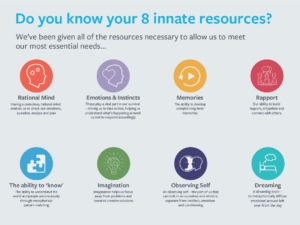
Pseudo empathy
Those with atypical anorexia nervosa, in my experience, also struggle to form close relationships and show ‘pseudo empathy’ (conveying signs of empathy but lacking genuine feeling behind it). The focus on obsessive calorie counting, cutting out certain foods or food groups, bingeing, purging, avoiding social occasions that involve food doesn’t usually develop before the age of 20 and tends to be associated with underlying symptoms of anxiety, depression and substance misuse. I am suggesting that atypical anorexia is more likely to be suffered by women with right-brained caetextia – far more women appear to have right-brained caetextia than men. Griffin and Tyrrell have observed that those who present for therapy tend to be emotionally intense, self-absorbed, have a strong imagination, spend much of the time disconnected from reality and only pay lip-service to reason. They see themselves as creative, often cry at the slightest upset, lack empathy, act inappropriately, have a history of relationship problems and perfectionism, and make directionless random associations between things (associative thinking), constantly changing from subject to subject.⁹
I have observed from clients with evident right-brained caetextia that there is always another ‘and’: “I am having problems with my partner and I can’t sleep and I get headaches and I think my job is in jeopardy and I’m not sure if I want to stay there anyway …” They find it hard to identify a particular problem. I would suggest that, in atypical anorexia, random solutions are adopted to reduce stress and anxiety and this includes dieting or over-eating.
Emotional soup

It seems to me that, in the narrative that right-brained caetextics present in therapy, many previous emotional upsets have attached themselves to the latest problem, and what is presented is an emotional soup with no concrete reality to separate its constituent parts. In my experience they have an overriding sense of being ineffectual and, no matter what they do or try in life, it will make no impact on the outcome whatsoever. That is, perhaps, why many seem to seek all sorts of outside help, whether it be self-help literature, spiritual assistance, workshops and classes on self-development, alternative medicines, popular psychology or anything that might offer a solution. Life takes them on a wandering never-ending quest for some kind of solidity and certainty. Coupled with this uncertainty is an over-reliance on the imagination, so it appears that the problems of life take on multidimensional meanings. A black-and-white thinking style (“I see it everywhere and it won’t change”) further embeds the stress and anxiety that they feel.
One 29-year-old woman with bulimia told me that she had struggled with weight issues from an early age and had previously had a problem with alcohol. Her pattern, since breaking up with her boyfriend some years ago, was to stay at work till late, then eat heavy takeaway food before going to bed. She spent her weekends at her computer, mindlessly eating. At the end of each month, horrified at her weight gain, she would spend a day taking laxatives and purging, and weighing herself, then suffer guilt for the whole of the next week. When I suggested that we look at what wasn’t working in her life and try and deconstruct the pattern of her food intake and habits, she said she hadn’t come to me for advice about eating; she wanted to get rid of the guilt. That was the problem, as far as she was concerned. I have often found that people with right brained caetextia seek solutions in completely the wrong places – maybe in a distorted attempt to meet the need for control. In the end, we did look at healthy ways to meet her needs (including getting a social life going again) and at her habits and patterns and, after many tearful sessions, we put in place a plan that broke the cycle of purging and guilt and the constant obsession with weight gain.
Substance misuse is a feature of atypical anorexia11, although whether that precedes the onset of the condition is not known. In my experience substance misuse definitely goes hand in hand with it; both have an onset at the same time (early 20s) and the habit of purging, through vomiting and use of laxatives, latches onto the reward circuitry of addiction. Importantly, anyone who has worked with addiction will know that misuse of substances such as alcohol or drugs is the perfect lubricant for unlocking a storehouse of imaginative emotional negative patterns (such as slings and arrows or perceived slights from the past) that can reinforce black and white thinking and further damage self-image and self-confidence.
Therapy for eating disorders
Over the last two years I have seen around 20 people with eating disorders at my practice in Ireland. Of these, 12 would have warranted a clinical diagnosis for anorexia under the current DSM, and I consider that all these clients had the symptoms and behaviours associated with left-brained caetextia. The other eight clients would have warranted a clinical diagnosis of atypical anorexia and, of these, four had all the features of right-brained caetextia. The other four clients had developed the condition as a result of trauma, which can lead a person into addiction or other maladaptive unhealthy behaviours. If trauma is the causal factor, then, as human givens practitioners know, the HG rewind detraumatisation technique can have excellent outcomes for clients.
The purpose of therapy from the human givens approach is to help people get their emotional needs met and assist them in using their resources in a healthy, balanced way. However, for most people with an eating disorder, some emotional needs are being met in an unhealthy way, and sufferers may be caught in the spiral of secondary gain (letting go of the behaviour would result in loss of security, attention, and status, as they understand it). The work takes time and patience. I have found, however, that using the human givens RIGAAR™ model for sessions – rapport building, (relevant) information gathering, goal setting, accessing resources, agreeing strategies and rehearsing success – can lead to successful outcomes. Based on my own experience, I can suggest the following tips.
Working with people with left-brained caetextia and anorexia
- In the first and second session, try to keep the subject of food, eating or non-eating out of the conversation, unless the client raises it. Your client knows everything about food; they are experts in their subject and there is nothing factual that you can usefully tell them.
- Remember that empathy doesn’t come naturally to these clients, so the therapist must be prepared for difficulties in rapport building. Very often the client doesn’t want to be there in the first place and has been pressured to come by family or a GP. To aid rapport building, look for a ‘point of interest’ – some subject that the person is enthusiastic about. This adds greatly to rapport building and helps the person disengage from the anorexia, if only briefly. Once a point of interest is established, it is helpful to listen and show interest without interposing comment.
- During information gathering, the aim is to get a picture of how the client interprets their world and that is often easier to do if questions focus in a concrete way on the here and now. Asking questions about internet use (including ‘pro-ana’ sites) can reveal their beliefs, thoughts and feelings around anorexia, while asking about sleep patterns and dreams always adds to rapport building. It is essential to build trust if the client is to come back for the next session, so being flexible in information gathering and probing only gently are key.
- When using metaphor or reframes, it is best to spell out specific steps for someone whose brain works in concrete facts and has little access to the imagination: “Think about buying flower seeds, getting the flower pot, getting the compost, putting the compost into the flower pot, opening the seed packet, taking out one seed, pressing your finger down into the compost and placing the seed into the hole, etc.” I have used this same detailed approach when agreeing a daily activity chart, spelling out which activities are to be done when and for how long, and with what expected results.
- Remember the power of utilisation – making good use of whatever a person brings with them. Anorexics are often great cooks, experts at collecting and following recipes, so that activity can be a means to access other information; it’s a valuable resource for setting tasks that can meet needs, such as going to a library to look up something specific and take notes – doing so starts getting them connected outside of the house and breaks the cycle of negativity.
- I have found my left-brained caetextic clients very responsive to gentle humour, especially if connected to a ‘my friend Jane’ type of story. My friend Jane prayed most of her life to win the lotto; she even dreamed about it. Her prayer was answered and she had a huge win. She thought it would bring her happiness. She moved into a great big house with lovely things from all over the world. She bought a huge, shiny car. But she still wasn’t happy, so she gave away her fortune, every penny of it, and moved back to her little council house, and was very happy. Laughter, of course, is a great medicine and produces feel-good chemicals.
- I never use the term goal or goal setting because, to someone with left-brained caetextia, it tends to mean pass or fail and creates a lot of stress. I much prefer to suggest trying an ‘experiment’, which hints at collaboration and room to manoeuvre.
- Make good use of tasks, both direct and ambiguous, outside therapy. For instance, I might suggest performing a simple task such as going for a walk along the beach, followed by an ambiguous one, such as collecting 10 seashells. I believe that ambiguity helps loosen the stranglehold of perfectionism. Including the 7:11 breathing technique as a morning and evening task is very helpful. I aim with tasks to increase healthy ways to meet emotional needs and for the client to pay less attention to negative websites or magazines that promote positive images of anorexia.
- A major feature of anorexia is the inability to distinguish between physiological and emotional states, for example, the physical sensation of being hungry and the emotional feeling of stress. As guided imagery is often very difficult for those with left-brained caetextia, I have found it very effective to relax them through the body scan, getting them to focus on individual parts of their bodies from head to toe, or toe to head, as this allows them to start distinguishing between physiological states and emotions.
Working with people with right-brained caetextia and atypical anorexia
- Expect rapport building to be difficult, as the individual flips from topic to topic. While information gathering, stick to the relevant points of why they came to see you in the first place, and try not to get pulled down the rabbit hole to all sorts of other side issues. ‘Who, what, when, where and how’ type of questioning is particularly helpful. If there is/has been substance misuse along with bulimia and binge eating, remember they are not separate but two sides of the same coin.
- Goal setting needs to be highly concrete and focus on breaking the pattern of binge eating (or self-harm). A good strategy is to set small goals to begin with, using charts and diaries for homework assignments and tasks. Tasks need to be concrete, such as visiting a friend, doing something for the community, taking exercise, and not ambiguous, as this could get the imagination flying in an unhelpful way. Practical tasks begin the process of introducing common-sense solutions to life’s problems. I also like to suggest a clear programme to be followed for relapse prevention, which includes seeing setbacks as part of the learning process.
- Be careful about identifying resources; these can appear to be multilayered but sometimes what look like resources are in fact aspirations – for example, “I am a good communicator”, yet the person has no friends. Look for resources that are concrete, such as playing an instrument, acting, drawing, gardening – resources that can be made use of and are helpful in getting needs met.
- While the 7:11 breathing technique is a valuable means of teaching self-relaxation, guided imagery should be kept to a minimum. Those with right-brained caetextia may well love it, as they rely heavily on the imagination, but we are trying to create a balance between application of the logical brain and overuse of the imagination.
I hope that this article will open up a conversation about a new way of looking at anorexia and atypical anorexia that takes into account the understandings of the human givens and the organising idea of caetextia. I believe that viewing these eating disorders from the vantage point of the caetextia spectrum adds to the body of knowledge that currently exists – that anorexia may fall within the autistic spectrum continuum and that a more empowering diagnostic and treatment model is needed at this time. The symptoms are only the ripples in the lake; the causal factors lie elsewhere.
References
1 Russell, G F M (1970). Anorexia nervosa: its identity as an illness and its treatment. In (ed J H Price) Modern Trends in Psychological Medicine. Appleton-Century-Crofts, New York.
2 Harris, E C and Barraclough, B (1998). Excess mortality of mental disorder. British Journal of Psychiatry, 173, 11–53.).
3 Russell G F M (1979). Bulimia nervosa: an ominous variant of anorexia nervosa? Psychological Medicine, 9, 429–48.
4 Rastam, M (2008). Eating disturbance in autism spectrum disorders with focus on adolescent and adult years. Clinical Neuropsychiatry, 5, 1, 31–42.
5 This test, devised by Professor Simon Baron-Cohen of the University of Cambridge, requires participants to look at pictures showing just people’s eyes and identify the emotion being expressed.
6 Baron-Cohen, S, Jaffa, T et al (2013). Do girls with anorexia nervosa have elevated autistic traits? Molecular Autism, 4, 24.
7 Girls with anorexia have elevated autistic traits (2013). http://www.cam.ac.uk/research/news/girls-with-anorexia-have-elevated-autistic-traits
8 Griffin, J and Tyrrell, I (2008). Parallel processing. Human Givens, 15, 4, 11–17.
9 Griffin, J and Tyrrell, I (2009). ASD and psychosis: is caetextia the link. Human Givens, 16, 3, 19–23.
10 For an overview, see Bucker, R L, Andrews-Hanna, J R and Schachter, D L (2008). The brain’s default network: anatomy, function and relevance to disease. Annals of the New York Academy of Sciences, 1124, 1–38.
11 See, for instance: https://pubs.niaaa.nih.gov/publications/arh26-2/151-160.htm
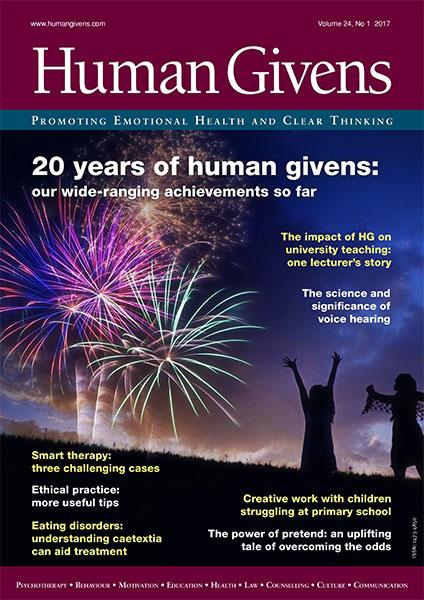
Learn more
- Advanced CPD for HG Therapists: Join Jo Baker for the Working with Eating Disorders One-Day Workshop
- Discover more resources and case histories on our Eating Disorder Awareness page
- Learn more about the human givens approach
- Find your nearest HG therapist here
- Our Ask the Expert mental health podcasts give you the chance to hear human givens professionals talking about mental health and emotional wellbeing from the point of view of their particular area of expertise.
HG’s ‘Ask the Expert’ Podcast Series
Working with anorexia – why we shouldn’t focus on food
– featuring Martin Dunne. Martin is a human givens therapist, he has a successful private practice in a dedicated, multi-disciplinary holistic clinic. Martin also has extensive experience in group and individual psychotherapy with young trainees in REHAB; and currently in Ireland’s largest addiction treatment centre. Martin has worked for over 10 years helping people overcome trauma, addiction and eating disorders.
